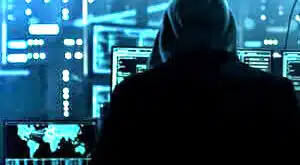Sports stadiums are finding the benefits of going cashless—and loving it.
Remember when getting a beer and a hot dog in the stands during a sporting event meant passing a $20 bill down the row and having your food, beverage and change passed back? It was part of the game experience.
In 2021, this fan experience is becoming a quaint memory as sports stadiums in professional, college, and even less-organized leagues are moving to cashless payments.
In September, for example, Square Inc. announced an ambitious deployment of its hardware and commerce software at SoFi Stadium, home of the National Football League’s Los Angeles Rams and Los Angeles Chargers. The deployment includes more than 1,000 Square Register and Square Terminal units in what is said to be the NFL’s largest venue.
With the move toward digital payments at multiple venues, fans can place orders from their seats through the team’s mobile app or by scanning a QR code on the back of the seat in front of them. They can pay via their mobile wallet. Once the order is placed and paid for, fans can even be notified when their order will be ready for pick-up or have it delivered to their seat.
Fans preferring to purchase food and beverages from a concession stand can enter their order into a kiosk at one station, then pick up the order at the next. Even in-stand vendors are being equipped with handheld POS terminals.
Warp Speed
While many stadiums had been moving toward cashless payments prior to Covid-19’s arrival, the pandemic accelerated the trend at warp speed. Many teams used the 2020 season to install cashless systems in anticipation of the return of fans during the 2021 season.
“Covid accelerated three to five years’ worth of cashless adoption into six months,” says Kevin Anderson, chief strategy officer at Los Angeles-based Appetize Technologies Inc., which provides cashless point-of-sale technology to Major League Baseball, minor-league baseball, and professional soccer teams.
Many sports stadiums are adopting cashless technology as a way to improve the fan experience. Contactless payments shave up to 50% off transaction times versus cash transactions, Anderson says, which translates into shorter wait times at concession stands.
That’s significant because waiting at a concession stand is a pet peeve for fans as it takes time away from watching the game. “Cashless concessions play a role in fans watching more baseball,” says David Cromwell, vice president of operations for Major League Baseball’s Chicago Cubs, which went completely cashless for the 2021 season at the club’s home stadium, Wrigley Field. “Our guests at the ballpark are on board with the technology.”
Fans attending Cubs games can place orders through the Major League Baseball mobile app, which also stores game tickets. Once the app is open, fans can locate the concession stand nearest to their seat, place an order, pay, and receive an estimated time the order will be ready. “This removes a lot of friction on the front end when ordering,” Cromwell says.
Fans can also place orders by scanning a QR code near concession stands or on the back of the seat in front of them using their mobile phone. Fans placing orders this way can opt to have orders delivered to their seat, because the QR code automatically locates where the fan is sitting.
Another factor driving adoption of cashless POS technology at sports stadiums is that the arenas have the Wi-Fi and mobile-network infrastructure to support it. “Most pro sports stadiums have made the investment to support mobile devices,” says Anthony Perez, executive vice president for sports entertainment at Shift4 Payments LLC, Allentown, Pa.
Prior to joining Shift4, Perez served as chief executive of POS solutions provider VenueNext, which Shift4 acquired in March for $72 million. VenueNext was created in 2004 by the San Francisco 49ers as the team was building Levi’s Stadium, which went fully cashless for the 2021 NFL season. The 49ers eventually spun off VenueNext as a standalone business.
Shortly after Shift4’s acquisition of VenueNext, Taylor Lauber, chief strategy officer for Shift4, said early indications were that 90% of volume at the locations serviced by VenueNext was coming through its applications, compared to 10% before the pandemic.
Colleges Are Next
An added benefit of cashless- and mobile-ordering technology is that once fans try it, they continue to use it. Venues serviced by VenueNext that were getting 40% to 50% of their in-stadium orders from mobile devices pre-Covid have kept or increased those volumes as pandemic-related restrictions on fan attendance eased, Perez says.
“We offered mobile ordering before cashless POS solutions and there were a lot of venues that were big on it,” says Perez. “As restrictions for fan attendance eased, they’ve kept that volume.”
Another driver is that the technology now has a proven track record. Prior to the pandemic, many professional and collegiate teams were hesitant to move to a cashless environment for fear of alienating cash-paying customers.
“Teams that were reluctant to put cashless technology into their venue now have the technology to do it,” says Geoff Johnson, a general manager at payments processor Fiserv Inc.’s Bypass unit. “Consumers are showing that they will embrace cashless in sports stadiums because they have come to expect it outside those venues.”
At Fiserv arena, home of the National Basketball Association’s Milwaukee Bucks, orders initiated through mobile devices during this year’s NBA finals totaled 8% to 10% of order volume per game, compared to about 1% prior, Johnson says. “We also see higher order values with cashless than we do when consumers pay in cash,” Johnson adds. “We are even seeing more mobile ordering in NCAA stadiums.”
While college stadiums and arenas are making the move to cashless POS technology, many still lack the infrastructure to support it, Perez adds. Two stumbling blocks are a wait-and-see attitude regarding acceptance of cashless technology and questions about whether it is better to go entirely cashless all at once or create a hybrid environment that supports cash and digital purchases, according to Johnson.
“Collegiate venues still lag the pros when it comes to cashless installations, but we expect to see a lot of movement toward the technology the next couple of years, especially among Tier 1 teams,” Johnson says.
Smarter About Data
But there is more to contactless technology than improving fan convenience. Stadium operators can see significant operational savings from the elimination of cash and can gather transaction data that helps them better manage orders during peak periods and identify best-selling items, which helps with inventory management.
The biggest operational costs tied to cash are the counting, securing, and transporting of it to the bank after each game. Counting the cash requires supervisors to ensure employees counting the money do not pocket any of it, a.k.a. shrinkage. Next, the cash must be securely stored and an armored-car service hired.
While cash-acceptance costs vary by venue, cashless POS technology greatly reduces the complexities of taking cash. “Cash acceptance can be cumbersome and going cashless has definitely brought operating efficiencies,” says the Cubs’ Cromwell.
For the time being, the Cubs are focusing on how to reinvest the operational savings from going cashless into creating a better fan experience, as opposed to applying those savings straight to the bottom line, Cromwell adds.
One metric that can help determine operational savings is the reduction in shrinkage. Loss from shrinkage averages about 3%, says Moon Javaid, chief strategy officer for the San Francisco 49ers. Levi’s stadium has 1,000 cash registers in the stadium, from which cash previously had to be collected.
Among the benefits sports venues claim from going cashless, the one that reportedly has the most untapped potential is how to use the transaction data to increase customer service and loyalty.
The 49ers, for example, are using transaction data to learn about peak ordering periods during games. In football, those periods are 15 minutes before kickoff and the 15 minutes during half time. Such information can help concessions operators better manage the flow of orders. Should orders during peak periods exceed the kitchen’s capacity, messages can be sent to fans providing accurate pick-up times.
For now, the 49ers are not looking to parse data down to the individual level to create promotions that encourage loyalty and return visits. Instead, many teams are taking it slow on that front until they have more first-hand experience with how fans are responding to, and making use of, the technology.
“We want to be smart. Right now, we are looking at broader uses of data, such as transaction times during peak periods,” Jawad says.
New ‘Ground Rules’
If cashless POS can make it in pro sports venues, which are located in markets that attract a large fan base, how far downstream can the technology go?
The Lafayette, Ind., Aviators, one of three amateur baseball teams operated by National Sports Services, went completely cashless for the 2021 season. The team, which did not play in 2020 because of the pandemic, opened a new stadium for the 2021 season. New York City-based The OLB Group Inc. provides the stadium’s cashless POS technology.
“With the team moving into a new stadium during Covid, we felt it was time to reset the ground rules” when it came to in-stadium purchases, says Bill Davidson, chairman of the Layfette Aviators. The Aviators enable fans who prefer to pay by cash to insert bills into a reverse ATM inside the venue. The machine dispenses a prepaid debit card for use inside the stadium.
One reason National Sports Services chose its Layfette franchise to go cashless was that nearby Purdue University had been testing cashless POS at some of it sports venues. As a result, Aviators management felt citizens in the Lafyette area would be accustomed to the technology. National Sports Services operates two other amateur baseball teams in Johnstown, Pa., and Spartanburg, S.C., both of which offer cashless payment options in addition to cash acceptance.
So far, Davidson says, “The response from fans has been favorable.”
Play ball.





